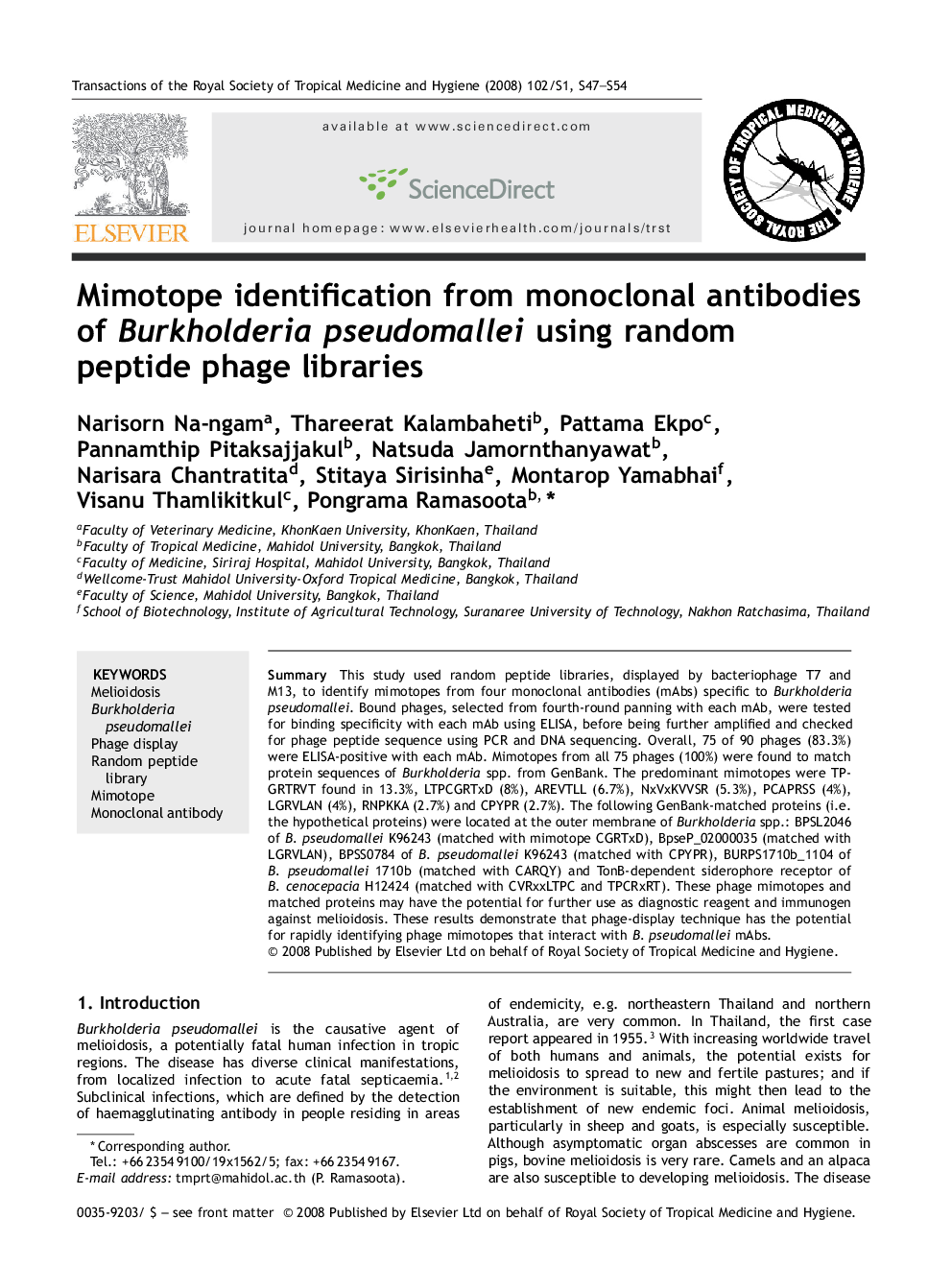| Article ID | Journal | Published Year | Pages | File Type |
|---|---|---|---|---|
| 3420901 | Transactions of the Royal Society of Tropical Medicine and Hygiene | 2008 | 8 Pages |
SummaryThis study used random peptide libraries, displayed by bacteriophage T7 and M13, to identify mimotopes from four monoclonal antibodies (mAbs) specific to Burkholderia pseudomallei. Bound phages, selected from fourth-round panning with each mAb, were tested for binding specificity with each mAb using ELISA, before being further amplified and checked for phage peptide sequence using PCR and DNA sequencing. Overall, 75 of 90 phages (83.3%) were ELISA-positive with each mAb. Mimotopes from all 75 phages (100%) were found to match protein sequences of Burkholderia spp. from GenBank. The predominant mimotopes were TP-GRTRVT found in 13.3%, LTPCGRTxD (8%), AREVTLL (6.7%), NxVxKVVSR (5.3%), PCAPRSS (4%), LGRVLAN (4%), RNPKKA (2.7%) and CPYPR (2.7%). The following GenBank-matched proteins (i.e. the hypothetical proteins) were located at the outer membrane of Burkholderia spp.: BPSL2046 of B. pseudomallei K96243 (matched with mimotope CGRTxD), BpseP_02000035 (matched with LGRVLAN), BPSS0784 of B. pseudomallei K96243 (matched with CPYPR), BURPS1710b_1104 of B. pseudomallei 1710b (matched with CARQY) and TonB-dependent siderophore receptor of B. cenocepacia H12424 (matched with CVRxxLTPC and TPCRxRT). These phage mimotopes and matched proteins may have the potential for further use as diagnostic reagent and immunogen against melioidosis. These results demonstrate that phage-display technique has the potential for rapidly identifying phage mimotopes that interact with B. pseudomallei mAbs.
